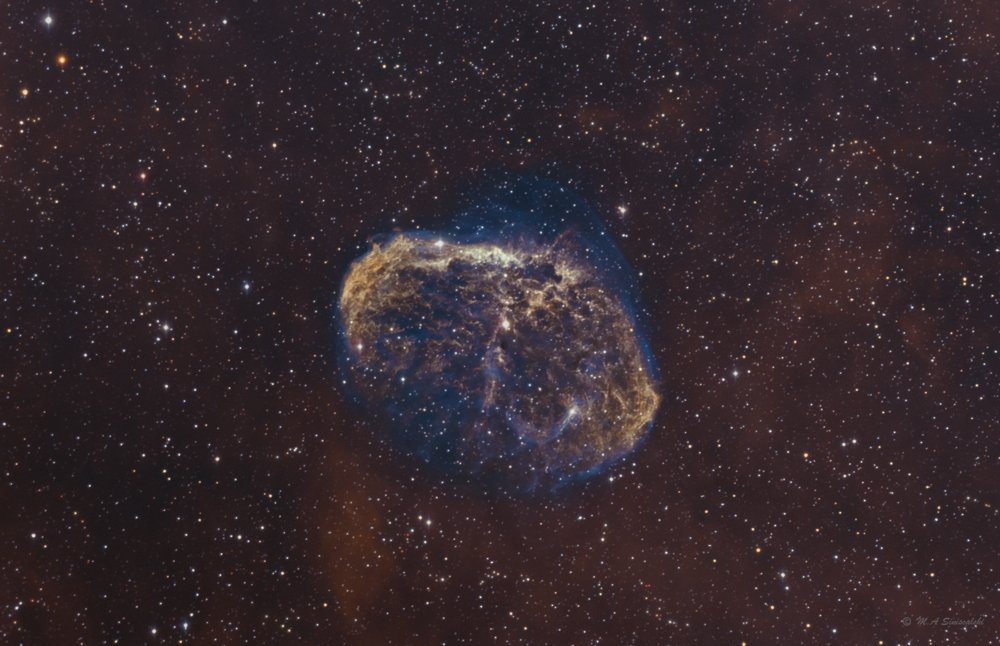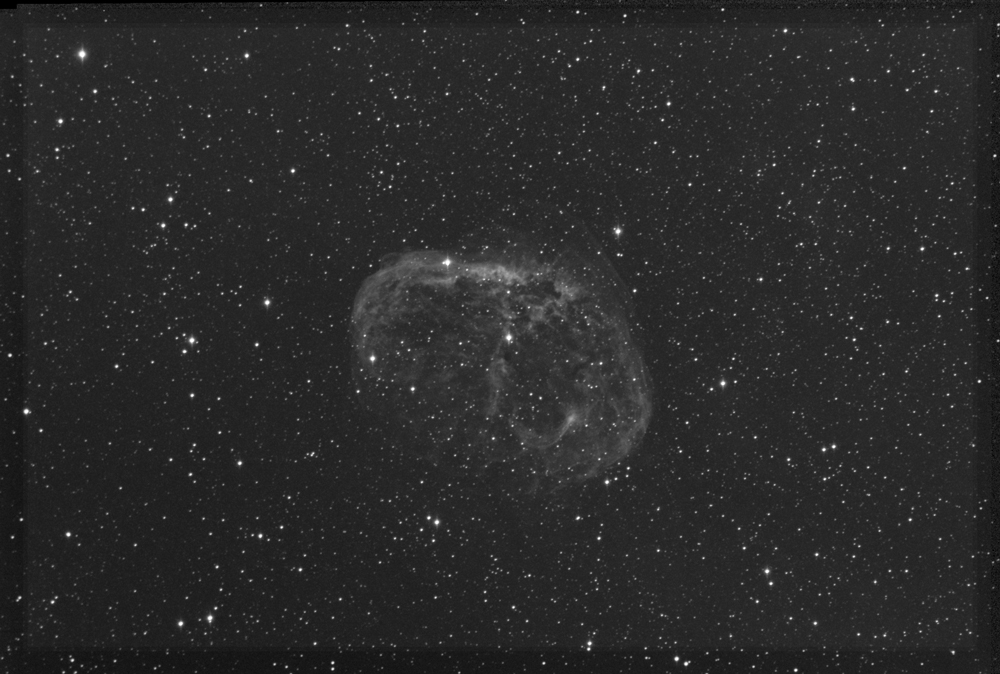© 2022 Michael A. Siniscalchi
NGC 6888
Emission Nebula in Cygnus
RA:20h 12m 36s Dec: +38 21' 39" Distance - ~5,000 ly Size 18'x12'
Wikipedia-
The Crescent Nebula (also known as NGC 6888, Caldwell 27, Sharpless 105) is an emission nebula in the constellation Cygnus, about 5000 light-years away from Earth. It was discovered by William Herschel in 1792. It is formed by the fast stellar wind from the Wolf-Rayet star WR 136 (HD 192163) colliding with and energizing the slower moving wind ejected by the star when it became a red giant around 250,000 to 400,000 years ago. The result of the collision is a shell and two shock waves, one moving outward and one moving inward. The inward moving shock wave heats the stellar wind to X-ray-emitting temperatures.
It is a rather faint object located about 2 degrees SW of Sadr. For most telescopes it requires a UHC or OIII filter to see. Under favorable circumstances a telescope as small as 8 cm (with filter) can see its nebulosity. Larger telescopes (20 cm or more) reveal the crescent or a Euro sign shape which makes some to call it the "Euro sign nebula".
Click on image for full size.
NGC 6888 position shown relative to our location (Sun) in the Milky Way Galaxy
Galatic Longitude: 75.6
Galatic Latitude: 2.4
Distance from Galatic Plane:283 ly above the galatic plane
Above image and info provided by Our Galaxy 3D Atlas application and used with permission by
Otherwise
Initial stretch of 140 minute exposure in Hydrogen-alpha (Ha)
Initial stretch of 180 minute exposure in Oxygen (OIII). The amount of OIII emission looks as strong as the Ha emissions and you can clearly see the surrounding halo.



